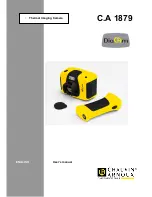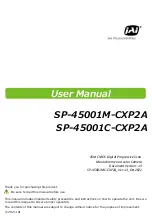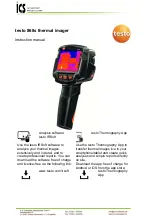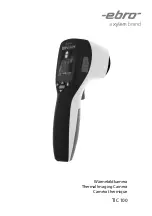
CDR
REFLEX
04.06.2019
ZVL657.01
CARDIN ELETTRONICA spa
Via del lavoro, 73 – Z.I. Cimavilla 31013 Codognè (TV) Italy
Tel:
+39/0438.404011
Fax:
+39/0438.401831
email (Italy):
email (Europe):
Http:
www.cardin.it
®
REMARKS
These instructions are aimed at professionally qualified "
installers of
electrical equipment
" and must respect the local standards and regulations
in force. The use and installation of these appliances must rigorously respect
the indications supplied by the manufacturer and the safety standards and
regulations in force.
Attention!
Only for EU customers -
WEEE marking
.
This symbol indicates that once the products life-span has expired
it must be disposed of separately from other rubbish.
The user is therefore obliged to either take the product to a suitable
differential collection site for electronic and electrical goods or to
send it back to the manufacturer if the intention is to replace it with
a new equivalent version of the same product.
Suitable differential collection, environmental friendly treatment and disposal
contributes to avoiding negative effects on the ambient and consequently health
as well as favouring the recycling of materials. Illicitly disposing of this product
by the owner is punishable by law and will be dealt with according to the laws
and standards of the individual member nation.
DESCRIPTION
CDR REFLEX is system made up of a one photoelectric unit with an inbuilt
transmitter and receiver and a passive retro-reflector disc. Self locking
adjustable lens which can be rotated horizontally and vertically through
plus or minus
10°
with respect to the standard installation position. These
adjustments permit lateral fitting and installations where the photoelectric
cell and retro-reflector disc are at different heights. (see details b and c, fig. 2)
USE
The infrared barrier constitutes an efficient safety system for the protection
of passageways or spaces which are equipped with automatic door or gate
systems. It is suitable for systems which have a passing room of not more
than
10m
.
TECHNICAL SPECIFICATIONS
- Emission with continuous modulation at
6,75 KHz
.
- Infrared emission wavelength:
623 nm
.
- Power supply:
12 - 24Vac/dc
.
- Maximum commutable power of relay with resistive load:
28W
in
dc/60VA
in
ac
- Max. voltage
40V ac/dc
- Power consumption:
12V ac/dc
,
21 mA
24V ac/dc
,
36 mA
- Operating temperature:
-10…+55°C
.
- Adjustable lens on self lubricating and self locking ball joint.
- Selection of the relay output contact mode N.C.-N.O. or 8,2kΩ via jumpers.
- Led signal strength indicator facilitates lens centring.
Test function:
- When wired to a suitable electronic programmer, this function allows the
continuous control of the presence of the infrared signal thus increasing
the safety and security level of the installation.
- Protection grade
IP55.
- Range:
10m
under all weather conditions such as thick fog, rain, dust etc.
INSTALLATION
Note:
In the case of installations involving more than one device, it is
necessary to leave a minimum distance of 1 metre between each device
(see part C of fig. 2).The photoelectric cell and reflector disc are normally
positioned frontally on the same geometrical axis and at the same height
from the ground.
Photocell installation
(fig. 3)
- Installation is possible on all types of structure. Other than the standard
aligned positioning the device can also be positioned both laterally (moving
the device out of the passageway) and at different heights in order to solve
problems posed by different structures ( detail a-b-c fig. 2).
- Choose the points at which the devices are to be surface mounted,
according to the requirements of the system.
- Work out the run of the cables from the structure to the point of connection.
- Fix the fast-fitting bracket at the chosen point (detail 1).
- Pass the connecting cables through the hole in the base of the case.
- Move the p.c.b. card slightly then wire up and connect the cables.
- Once the device has been wired up, snap the case to the fast-fitting bracket,
remembering to place the waterproof seal between the case and the bracket.
The joint between the case and the bracket is guaranteed to be waterproof
(detail 2).
- Insert the sealing gasket into its seat on the case, carry out any eventual
adjustments and then fit the glass enclosing cover into place (details 5-6 ).
Installation of reflector disc (fig. 5)
- Choose the surface fixing point according to the requirements of the system.
- Remove screw "
1
" and nut "
2
" and remove disc "
3
".
- Insert nut "
4
" into the hole provided and secure it with a strip of adhesive
tape "
5
".
- Mark the fixing points "
6
", drill a hole in the wall "
7
" and insert the wall plugs
"
8
".
- Fix the protection base of the reflector disc to the wall using the two screws
"
10
".
- Position the reflector disc "
11
" and secure it with the screw "
12
"
ADJUSTMENT AND FINE TUNING
Device input test
The
TST
control signal is an isolated input which inhibits the transmitter from
performing a photocell function test. If the voltage on
TST
is higher than
10Vac/dc
, the input is considered high. Instead, if it is lower than
6Vac/dc
,
the input is considered low. The voltage applied to the
TST
input may be
different from the one used to power the photoelectric cell, but in any case
must not exceed
24Vac/dc
.
Jumper
J3
(fig. 1) defines which input state (high/low) will inhibit the
transmitter. When it is in position 1 (fig. 1), the transmitter will be enabled as
long as
TST
is low, and inhibited when
TST
is high. If the
TST
input is not
used, set
J3
to position 1.
Connections and configuration
- Pull out the board as shown in figure 3.
- Set jumpers
J1
to
J4
according to the requirements of the system.
- Make the connections on the terminal board as shown in figure 1, using
cables with a minimum cross section of
0.2 mm
2
(
AWG #24
).
- Replace the board in its original position.
- Power up the device, making sure that the transmitter is positioned on
the right side of the optics and that the red light is on.
Centring
The centring is done by aligning the optics with the reflector, trying to obtain
the best possible signal level. Check the indication given by light
L1
, working
on the optics to reach a good or at least a sufficient level. The signal level
displayed by
L1
is represented by the modes listed below.
Status of LED
L1
Signal level
Fixed ON
Good
Slow flashing
Sufficient
Fast flashing
Insufficient
Spento
Absent / interrupted beam
Jumper
J4
must be set according to the distance between the photoelectric
cell and the reflector. If the distance is less than
5m
, set
J4
to position 2. If
the centring reaches an insufficient level, move it to position 1. For distances
greater than
5m
, set
J4
directly to position 1. Check that the centring is
sufficient, even with the glass cover in position.
RETRO-REFLECTIVE PHOTOCELL
MODEL
DATE
SERIAL NUMBER
SERIES
This product has been tried and tested in the manufacturer's laboratory, during the
installation of the product follow the supplied indications carefully.


















